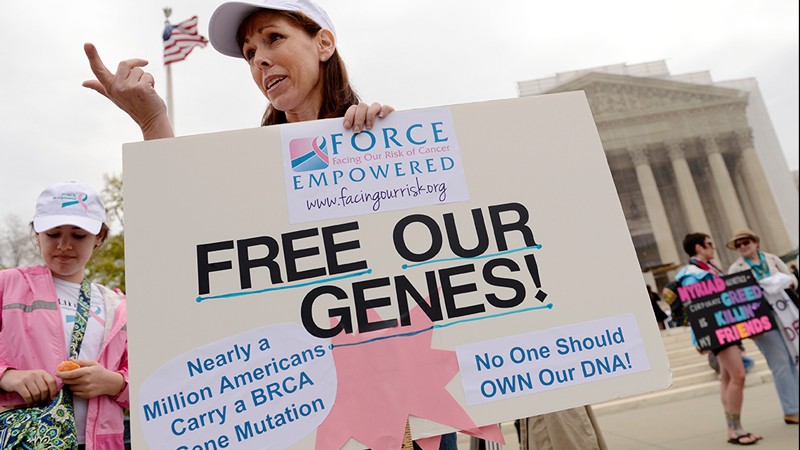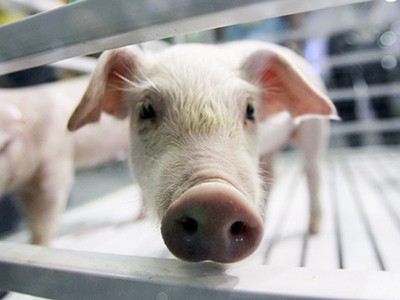The Genome Defense: Inside the Epic Legal Battle to Determine Who Owns Your DNA Jorge L. Contreras Algonquin (2021)
Not so long ago, if you asked someone about the US Patent and Trademark Office’s practice of granting patents on human genes, you’d probably get one of two responses. Biotechnology insiders would shrug — such patents had been standard practice for decades. They were considered a linchpin of the burgeoning genetic-testing industry. Those less intimate with the inner workings of biotech often had a different reaction: “But that’s just … wrong,” said lawyer Chris Hansen. “Who can we sue?”
In 2009, Hansen, a veteran of civil-rights cases at the American Civil Liberties Union (ACLU) in New York City, embarked on a lawsuit that ended gene patenting in the United States. The effort seemed doomed, yet Hansen went on to win at the US Supreme Court, challenging the very idea of what patents are and what they should do.
The unexpected twists and turns of that case — as well as its impact on medicine, and particularly on the lives of women affected by breast and ovarian cancer — are ably and affectingly detailed in The Genome Defense. Its author, patent scholar Jorge Contreras, has been a vocal critic of over-reaching patents and the universities that grant exclusive licences to their intellectual property, particularly when they nurture monopolies and sign over responsible stewardship of their patents to the licensee (J. L. Contreras and J. S. Sherkow Science 355, 698-700; 2017).
That spirit is evident in the book. But readers should note that Contreras is now employed by the University of Utah in Salt Lake City, which historically generated some of the patents that Hansen ultimately decided to challenge. (Contreras took the Utah job after he started the book; he argues that its themes go beyond one set of patents to depict the tensions between the law and the pace of technology.)
Those patents claimed rights to the sequencing of two genes, BRCA1 and BRCA2. Some variations in these are associated with breast and ovarian cancer. The University of Utah licensed some of the relevant patents exclusively to Myriad Genetics in the 1990s. The Salt Lake City company used its intellectual property to create a monopoly on certain tests for cancer risk, and threatened potential competitors with legal action. At the time, the tests cost thousands of dollars and, thanks in no small part to the vagaries of the US health-care system, were not always available to the people who needed them.
Personal stories
The consequences of that lack of access could be devastating. Contreras pulls no punches in detailing the stories of women who were unable to get tested, only to find later that they had a life-threatening cancer that could have been prevented.
But by the 2000s, gene patents were common. In 2005, one team estimated that 20% of the human genome had been patented (K. Jensen and F. Murray Science 310, 239–240; 2005). Although products of nature are not patentable under US law, some lawyers argued that isolating a gene from its surrounding chromosome fundamentally alters the DNA and therefore constitutes an invention. Another, more utilitarian, defence held that gene patents were necessary to nurture health-care innovation.
There is a reason that few thrillers have been based on patent law. Patents are difficult to digest — sometimes by design. The more ambiguous they are, the more flexibility a patent holder might have to claim that their intellectual property encompasses someone else’s invention. “The first part of a patent reads like a scientific paper written by a lawyer, and the last part reads like a legal document written by a scientist,” writes Contreras. “In both cases, you get the worst of both worlds.”
Thankfully, Contreras spares us the details, pulling out only nuggets that are needed to understand the case. He explains the science and legal arguments clearly and succinctly. (He does a better job of this than did some of the lawyers and justices involved, who trotted out painful analogies throughout the four-year process: genes were likened variously to chocolate-chip cookies, baseball bats and kidneys.)
For me, the most interesting parts of the book were its tangents. The Myriad story highlights the convoluted incentives in the genetic-testing industry that sometimes work against patients’ best interests. I longed to learn more about how the Supreme Court’s decision — as well as other recent decisions from the court on what can and can’t be patented — had affected the industry. The book also lacks any international context for gene patents, which are alive and well in Europe. A 2017 survey of European genetic-testing laboratories found that 14% of non-profit respondents had refrained from offering a genetic test because of patent concerns (J. Liddicoat et al. Eur. J. Hum. Genet. 27, 997–1007; 2019).
But Contreras succeeds in his main mission: to detail the narrative history of a landmark patent case. The personal stories of key players are rich with detail. We learn about Tania Simoncelli, who, as an ACLU intern with a passion for science and social-justice issues, first brought gene patents to the attention of Hansen. And we encounter Herman Yue, who, at the time that the case was launched, was an intern for a federal district judge, and who just happened to have a doctorate in molecular biology. Yue was pivotal in crafting a surprise early court decision in favour of the ACLU.
Readers are also treated to the inside story of the schism in the US government, with some agencies, most notably the patent office, in favour of gene patents, and the National Institutes of Health, among others, against them. It fell to acting solicitor general Neal Katyal to walk a tightrope between arguing parties, eventually developing a federal government stance: namely, whole-gene sequences as they are found in genomes should not be patentable, but the assembled protein-coding regions of a gene — minus intervening bits of non-coding DNA often scattered throughout — should. The compromise satisfied no one completely.
By 2013, when the Supreme Court issued its unanimous decision in favour of the ACLU, gene patents and Myriad-style testing of single genes were already falling out of fashion. Medical diagnostics had moved on to multi-gene testing, and now, increasingly, the emphasis is on whole-genome sequencing. But this story stands as a guide to the forces that shape an increasingly important industry — and to the vexed influence of patents.
"that" - Google News
October 25, 2021 at 04:07PM
https://ift.tt/3vOfH1N
Inside the lawsuit that ended US gene patenting - Nature.com
"that" - Google News
https://ift.tt/3d8Dlvv




Tidak ada komentar:
Posting Komentar